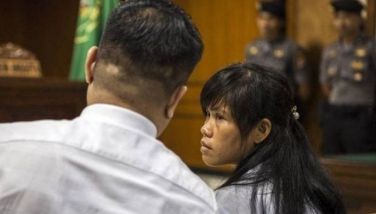Climate risk as a constraint on alternative energy
(Based on the article entitled “A general source-sink model with inoperability constraints for robust energy sector planning.” Applied Energy vol. 88: pp. 759-3,764.)
The role played by low-carbon energy sources in the global struggle to mitigate anthropogenic climate change is already well understood. The International Energy Agency envisions the integrated adoption of multiple “technology wedges” consisting of renewables, energy efficiency, carbon dioxide capture and storage (CCS) and even nuclear energy in order to reduce the total global release of greenhouse gases to manageable levels. Rather than relying on any single low-carbon technology to become the dominant one, the idea is to use each option to contribute incrementally toward the cumulative reduction of carbon dioxide emissions. Of course, in the aftermath of the events in Japan last March, nuclear energy has, at least temporarily, become unpopular. This event clearly illustrates the potential vulnerability of energy systems to natural disasters. Other than seismic activity, it is possible to imagine various disruptions that can wreak havoc on modern energy systems: extreme weather, human error, and even malicious and deliberate attacks. How should energy planning be done to account for such risks?
One approach, developed about a decade ago by the systems engineering research group of Prof. Yacov Haimes at the University of Virginia, is known as inoperability input-output analysis (IIOA). This methodology bears strong mathematical resemblance to input-output models used by economists throughout the world. It should be noted that this elegant framework, which was originally developed by Wassily Leontief (who thus won the 1973 Nobel Prize in Economics), has also been extended to various systems characterized by high levels of connectivity. Thus, input-output models have also been used for diverse applications such as tracing nutrient flows in ecosystems and, by analogy, quantifying material and energy exchanges in the field of “industrial ecology.” Haimes and his coworkers introduced the concept of “inoperability” as a quantitative measure of the degree of failure of a system, measured on a scale ranging from 0 (corresponding to a normal, fully functional state) to 1 (corresponding to total failure). For example, if a 500-MW power plant is only able to generate 400 MW, then the degree of inoperability of the power plant is (500 - 400) ∏ 500 = 0.2 or 20 percent. Various extensions of IIOA have been developed ever since the concept was first proposed in 2001, in an article published in the Journal of Infrastructure Systems. Haimes and his group have used this technique to do ex post analysis of the consequences of various disruptive historical events, including the terrorist attacks of 9/11 and the 1991 eruption of Pinatubo.
Although much of the current IIOA literature focuses on retrospective analysis, there is definitely some promise in the use of the inoperability concept for prospective modeling. In such a scenario, the purpose of the analysis would be to plan for the future, rather than to understand the past. I myself have recently started to explore the use of inoperability in energy planning. One particular issue is the vicious cycle that links bioenergy to climate change. On one hand, bioenergy is one of the key “wedges” needed to reduce global greenhouse gas emissions. This part of the causal loop is already well-known and easily understood. On the other hand, climate change may affect bioenergy production capacity on both local and global scales. Whether bioenergy is derived from commercial crops (such as sugarcane, corn or coconut) or more futuristic “second generation” feedstocks (such as switchgrass or microalgae), climate risk must be considered as an important criterion in long-term energy planning, since factors such as rainfall, temperature and the frequency of typhoons affect agricultural output. Otherwise, shifts in climate may actually reduce the viability of an important low-carbon energy option. I recently published an article in Applied Energy which describes a model for integrating such risks into energy planning using Haimes’ inoperability concept. This work shows that an energy system can be made more robust by using a portfolio of energy sources, so that source subject to higher climate risks can be “diluted” by combining them with low-risk resources. The concept also applies to energy sources other than biomass. For example, in countries such as New Zealand where hydropower is a major source of electricity, long-term changes in rainfall need to be taken into account during energy planning. If less precipitation is expected due to climate change, such a country will need to supplement its energy mix with sources which are not so dependent on rainfall.
In summary, the main point I want to make is that there is a two-way interaction between energy and climate. While it is clear that renewable energy is necessary to help mitigate climate change through reduction of carbon dioxide emissions, it is equally important to plan energy systems to ensure that they will be robust to changes in climate which result from greenhouse gases already present in the atmosphere.
* * *
Prof. Raymond R. Tan is a university fellow and full professor of chemical engineering at De La Salle University. He is also the current director of that institution’s Center for Engineering and Sustainable Development Research (CESDR). One of his current research interests is the development of models to optimize the robustness of energy systems to risk factors such as climate change, natural disasters and malicious attacks. He is the author of more than 60 published and forthcoming articles in ISI-indexed journals in the fields of chemical, environmental and energy engineering. He is member of the editorial boards of the journals Clean Technologies and Environmental Policy, Philippine Science Letters and Sustainable Technologies, Systems & Policies, and is co-editor of the forthcoming book Recent Advances in Sustainable Process Design and Optimization. He is also the recipient of multiple awards from the National Academy of Science and Technology (NAST) and the National Research Council of the Philippines (NRCP). He may be contacted via e-mail ([email protected]).
- Latest






























